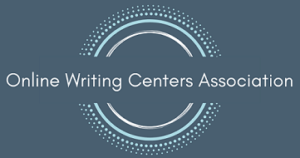Keywords
Disability, Writing Programs, Administration
Abstract
Writing programs and classrooms often bring together the most diverse groups of students from across a campus. Our teaching may be on the cutting edge, student-centered, multimodal, progressive. Too often, however, we fail to communicate with disability services offices about the unique nature of our teaching and learning. We rarely lecture or set tests and exams. Yet the vast majority of the “accommodations” offered to students with disabilities focus on these facets of higher education. As Laura Sokal and Alina Wilson (2017) have shown, extended testing time accommodation (ETTA) is the most common accommodation assigned to post-secondary students with disabilities, “assigned in over 70% of cases” (p. 28). In writing courses, testing is rare. This means that disability services offices might have very little to offer to our students. The result is that writing teachers could be out of sync with what can best help students; we may be creating new forms of discrimination and obstruction, all while congratulating ourselves because the accommodation process seems to only apply to other classrooms—and other teachers, those using what we may see as outdated forms of teaching. Exempting ourselves from the “conventional” accommodation system, or just going with the flow and offering mismatched accommodations, evades the complexities of what accommodations may look like in the unique context of a writing classroom. In turn, we create what Stephanie Kerschbaum (in Yergeau et al., 2015) called “inhospitality,” when we “persistently ignore access except as a retrofit” (“Modality”). Or we may offer what Dale Katherine Ireland (2016) called an “uncanny accommodation” (n.p.) when accommodations may be designed to meet a legal standard, but actually can make an environment more inaccessible. As Sushil Oswal (in Yergeau et al., 2015) argued, these processes create a situation in which access for disabled students remains “intrinsically inferior to the primary access available to the able-bodied because such an access sets the disabled apart in a separate category. It says to the world, it’s okay for the disabled to wait a bit longer. It says that it’s alright if they get a little less” (“Ableism technologies”). In this webtext, we will discuss opportunities for engaging with students, disability service offices, and the accommodations process more fully to ensure that our teaching practices provide equal opportunities for our students.
Citation Information
Type of Source: Journal Article
Authors: Jay Dolamage, Melissa Helqust, Tara Wood
Year of Publication: 2020
Title: “Connecting Writing Programs and Faculty with Disability Services”
Publication: Kairos 24 (2)
